Your dog’s sleep secrets are stranger than you think, and science is finally catching up.
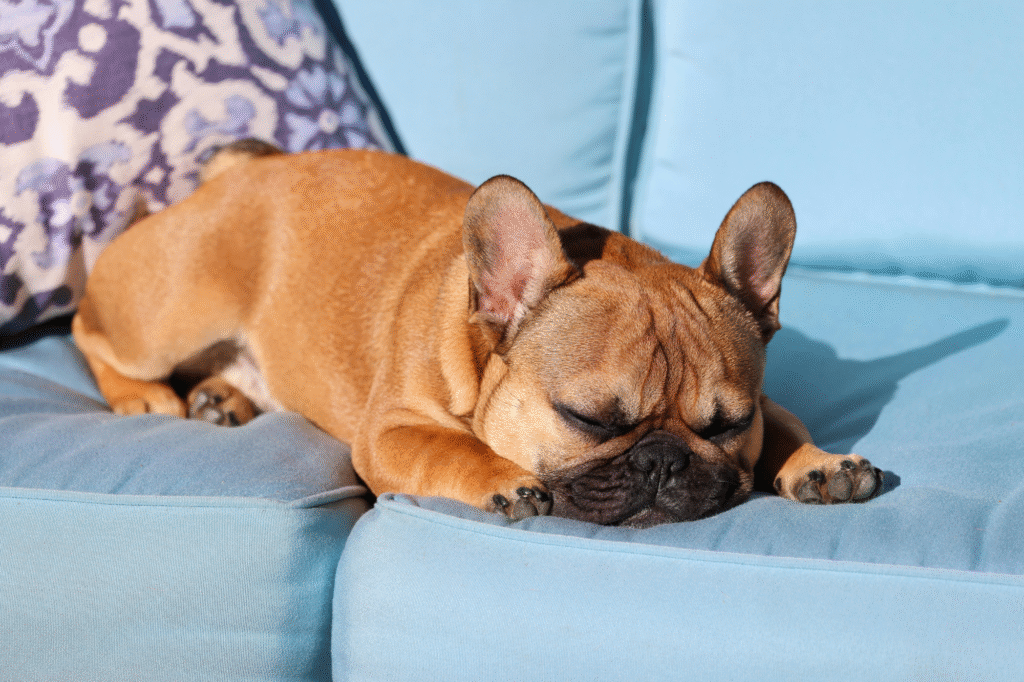
Dogs don’t just nap; they travel to entire dream worlds while they’re doing it. That twitching paw, the soft whimper, the wag that happens when they’re dead asleep—it’s all part of something researchers are still trying to fully understand. What’s wild is how similar their dreaming patterns are to ours, yet still so uniquely canine. If you’ve ever watched your dog drift into REM sleep and wondered what’s happening behind those closed eyes, here’s what science has discovered about your dog’s dream life.
1. Dogs replay entire adventures in their dreams.
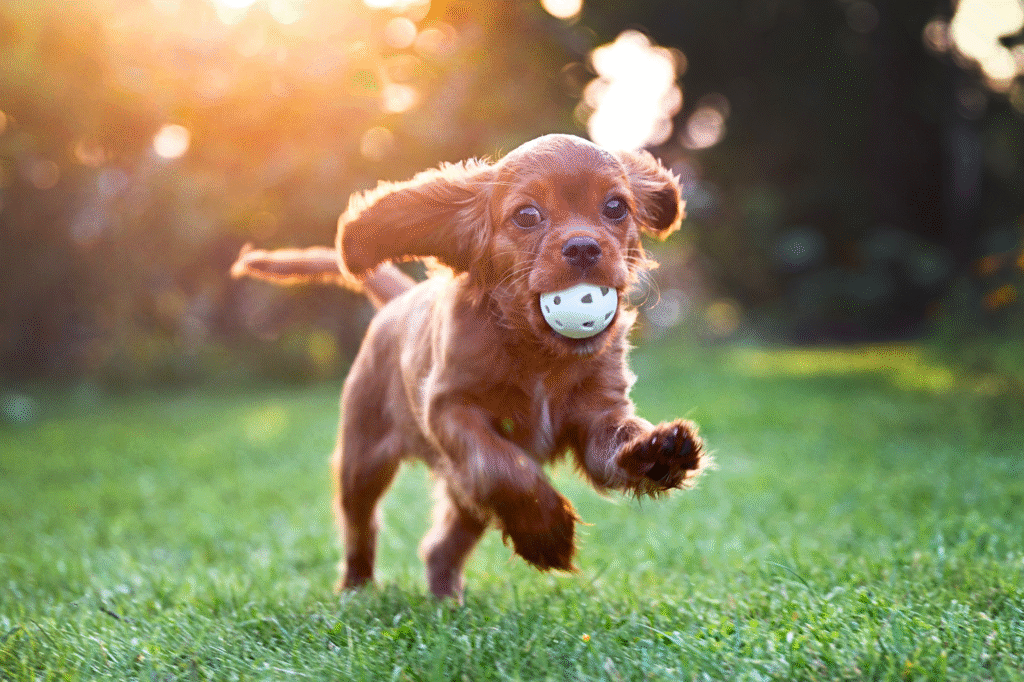
Your dog may be chasing that squirrel all over again while fast asleep. This isn’t just a cute idea—it’s backed by brain studies that tracked memory replay in sleeping animals. MIT researchers noted that even rats show identical neural patterns when dreaming about daytime experiences, and dogs’ brains work in similar ways. Those twitching paws and muffled barks? They’re likely running through their favorite scenes one more time.
It’s more than nostalgia. These dream sequences strengthen what they’ve learned and keep emotional highlights intact. That’s why the small movements you see aren’t random spasms—they’re pieces of a story only your dog is watching unfold inside their head.
2. Emotional processing sneaks into their sleep.
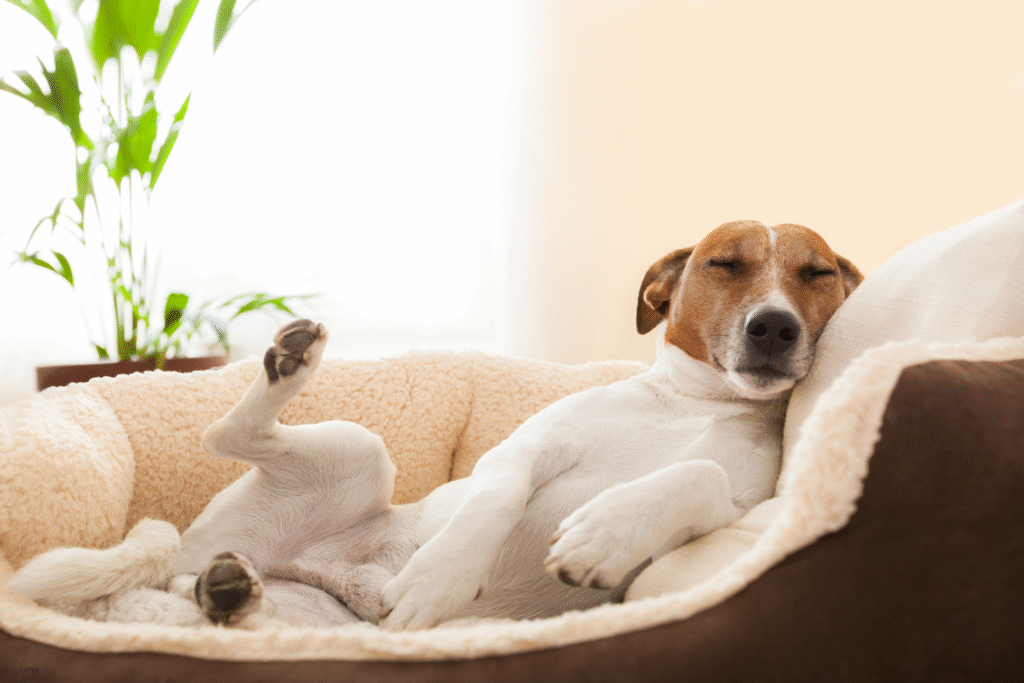
You’ve probably noticed how some naps leave your dog calm and others strangely needy. That shift may have to do with how emotions get filed away during dreams. The American Kennel Club explains that dogs work through emotional memories when asleep, meaning a stressful dog-park standoff or a perfect training session could resurface at night.
When that happens, they sometimes wake up seeking comfort or acting unusually affectionate. It’s like their dream life softened an emotional edge, and you just happen to be their go-to safe space afterward. Sleep for dogs isn’t only about rest—it’s emotional housekeeping.
3. Puppies dream more than adults because they’re learning.
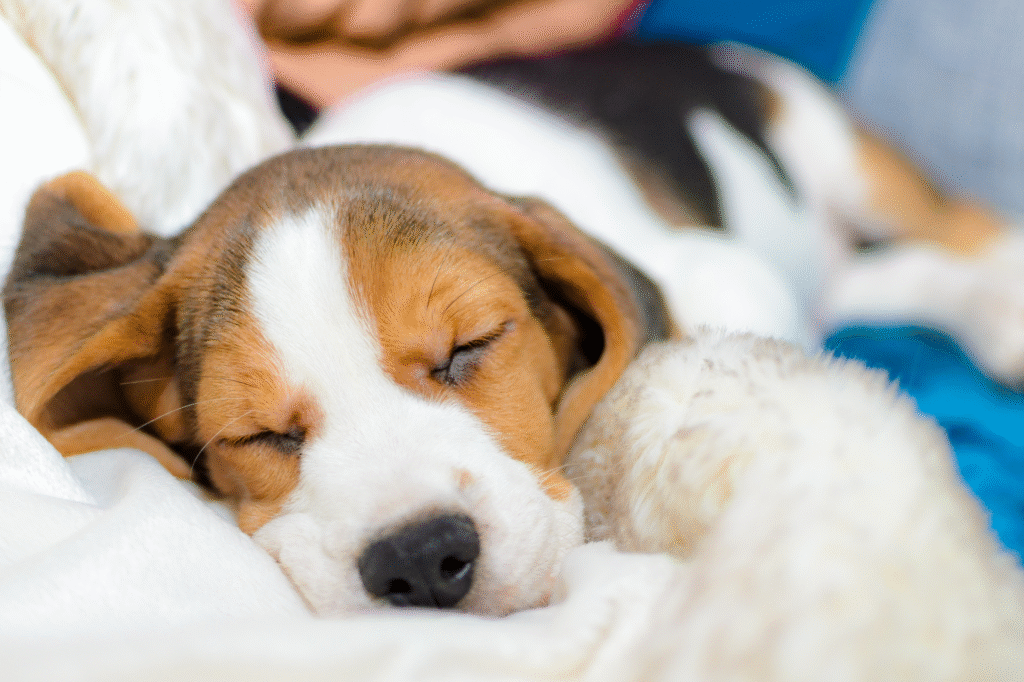
Those long twitchy puppy naps have a reason. A study out of the University of British Columbia found puppies spend proportionally more time in REM sleep compared to adults, and REM is the dream-heavy stage. All that new information they pick up—your voice, commands, smells, even how to use stairs—gets sorted and practiced when they’re out cold.
Dreaming is basically their way of running “software updates.” That’s why they seem busy even in their deepest sleep. Their little bodies may be still, but their brains are rehearsing life on repeat.
4. Old dogs may dream in slower motion.

Senior dogs often seem quieter during sleep, but what’s happening in their brains is fascinating. Their REM cycles can be shorter and less frequent, yet what they do dream about may feel stretched out. This is similar to how older humans often describe dreams as slower and more vivid. Their aging brains filter and process information differently, so dream experiences can feel less chaotic and more deliberate.
You might notice older dogs twitch less but still show facial expressions, sometimes even soft, slow whimpers. That doesn’t mean their dreams lack emotion—it’s just that their brains prioritize comfort and memory consolidation instead of fast-paced excitement. They’re likely revisiting well-known routines and familiar places, rather than wild new adventures. Dreamland for senior dogs often becomes a slower, calmer space where safety and nostalgia take center stage.
5. Certain breeds may dream more intensely.
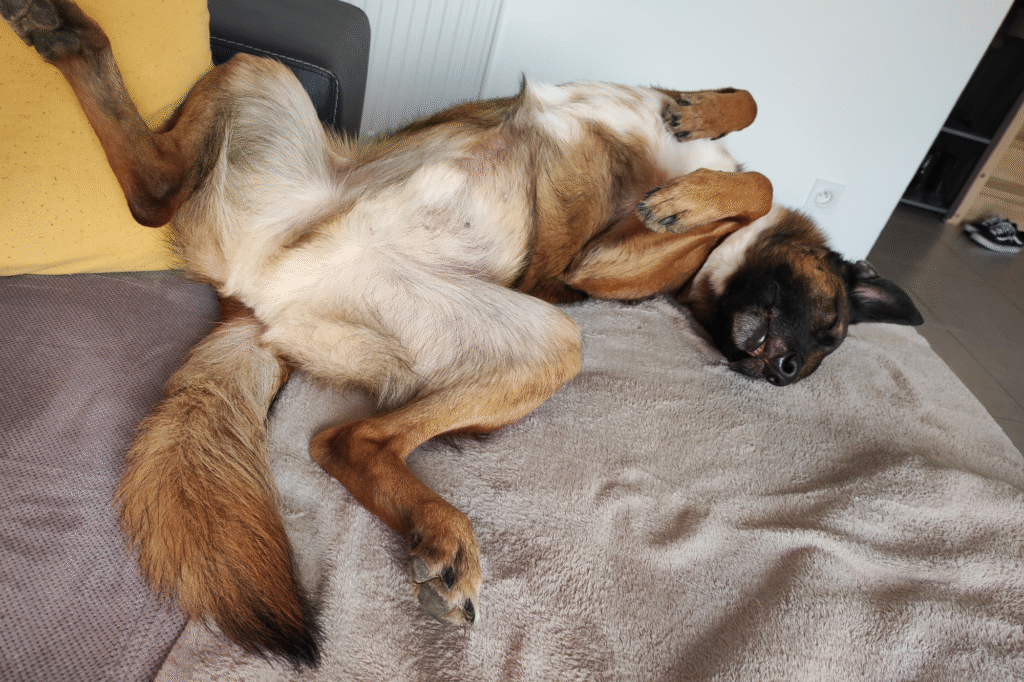
Some breeds just sleep like they have an entire alternate life. Dogs bred for high energy or problem-solving, like Border Collies or Belgian Malinois, often show more physical activity during dreams. Researchers suspect this is linked to their active waking hours and elevated cognitive processing. Basically, busy minds don’t stop when they’re asleep.
Owners often report more twitching, vocalizing, and even coordinated paw movements in these breeds compared to lower-energy dogs. These active dreams can mirror a day of herding, training drills, or intense play sessions. While it can look dramatic, it’s actually healthy—it shows their brains are engaged and processing everything they learned. Their dream states might even help reinforce training and learned behaviors, giving them an edge in retaining commands and problem-solving skills.
6. Trauma can sneak into dream cycles.
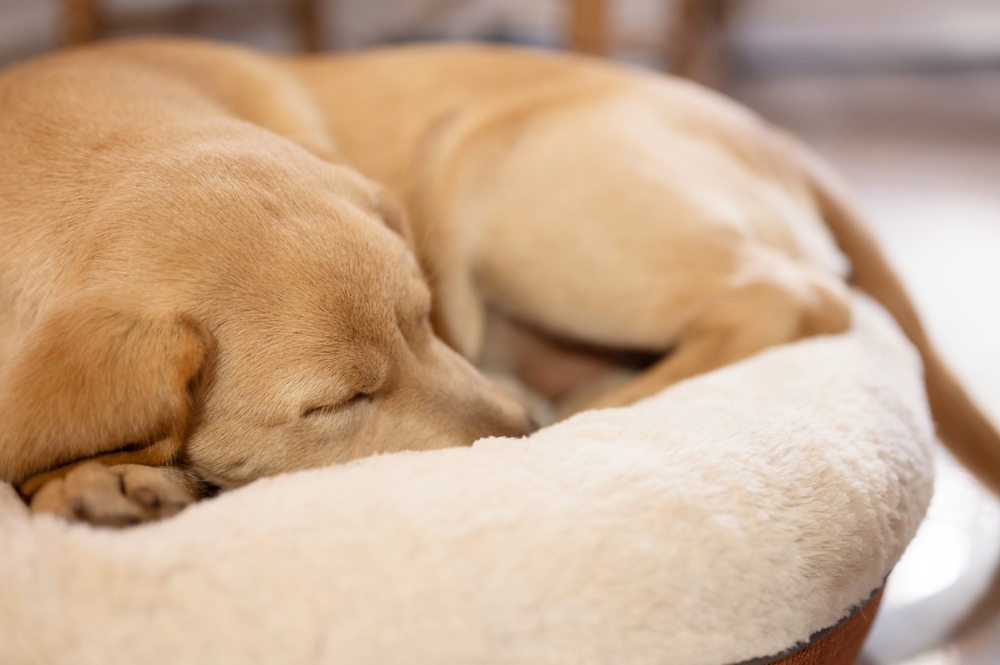
Dogs with a history of neglect or abuse often exhibit unusual sleep behaviors. Those startled jerks, fearful whimpers, or sudden wake-ups aren’t random—they may be linked to trauma-related dreaming. Studies on shelter dogs have noted restless sleep cycles and abrupt transitions out of REM, similar to patterns seen in human PTSD.
When rescued dogs finally find safe homes, these dreams often decrease in intensity as trust builds and stress responses calm. Over time, their dreams shift away from fear-based triggers to more typical, routine memory playback. That’s why patience and consistent comfort are key for formerly traumatized dogs; their subconscious is literally learning that life is safer now.
7. Dogs sometimes dream of people they love.

Many owners believe dogs dream about them, and science suggests they might be right. Dogs’ dreams often reflect emotionally significant moments, and few things are more important to them than their humans. When you see your dog sigh softly or even wag in their sleep, it could be them replaying a memory of cuddling, playing, or even waiting by the door for you.
This connection deepens because dogs build strong emotional associations with their favorite people. Their brains are wired to reinforce bonds that keep them safe and happy. So yes, there’s a good chance you’ve appeared in your dog’s dream reel, at least as a supporting character in their personal highlight film.
8. Sleep positions influence dream activity.
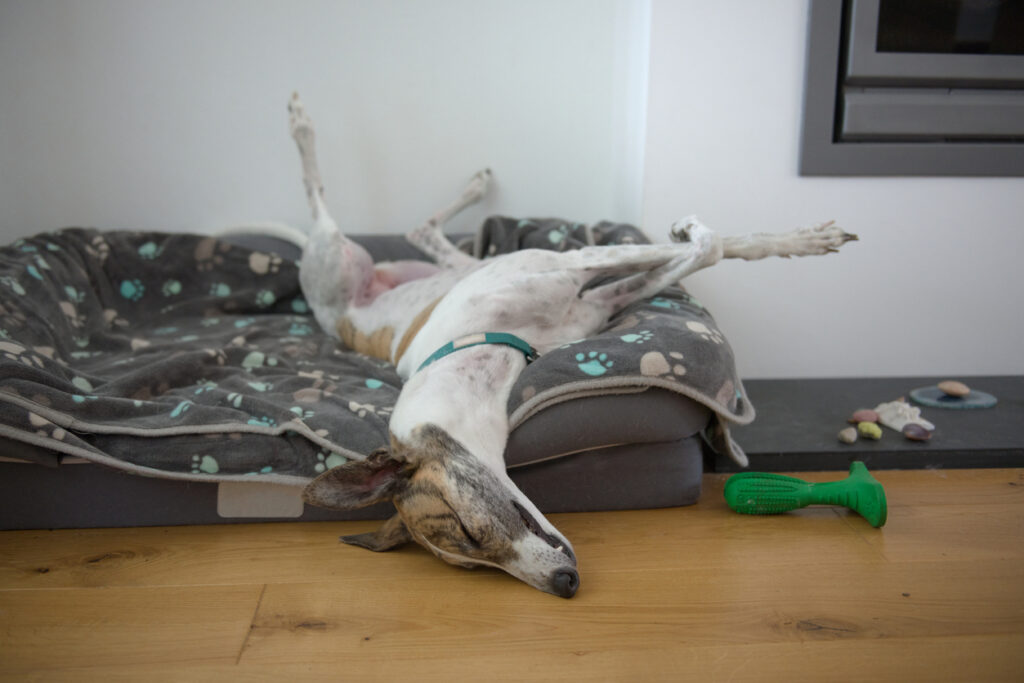
That adorable curled-up pose or dramatic sprawled-out stretch isn’t just about comfort—it changes how dogs dream. Dogs sleeping on their sides or backs often enter deeper sleep stages faster and may display more dream activity compared to those curled tightly. The looser the body posture, the easier it is for their bodies to relax into full REM cycles.
Dogs that stay in protective or tense positions may dream differently, sometimes shorter and less vivid, because their muscles stay partially engaged. Observing how your dog naps can give subtle hints about what kind of dream activity they’re likely having—and whether they’re fully relaxed in their environment.
9. Dreaming helps sharpen survival instincts.

Dreams aren’t just cute or entertaining for dogs; they’re functional. Many scientists believe dreaming helps reinforce instinctual behaviors like running, chasing, or defending territory. These actions often appear in their dreams as practice for real-life scenarios, similar to how wild animals “rehearse” survival skills during REM.
Even domestic dogs benefit from this, as it fine-tunes reaction times and strengthens neural pathways tied to critical responses. It’s one of the many reasons dogs wake up refreshed and ready to tackle their world, whether that means catching a frisbee or standing guard by the window.
10. Their dream cycles are surprisingly similar to ours.

Humans and dogs share a lot more sleep structure than most people think. Both experience slow-wave sleep followed by REM stages where dreams are most vivid. The main difference is how often dogs cycle through these stages—they drift in and out more quickly, resulting in many shorter dreams rather than a few long ones.
This similarity has allowed scientists to study canine dreaming as a window into how our own brains process memories and emotions. Watching your dog’s sleepy tail wag or soft ear twitch isn’t just heartwarming—it’s a reminder of how connected we are, even in unconscious states.
